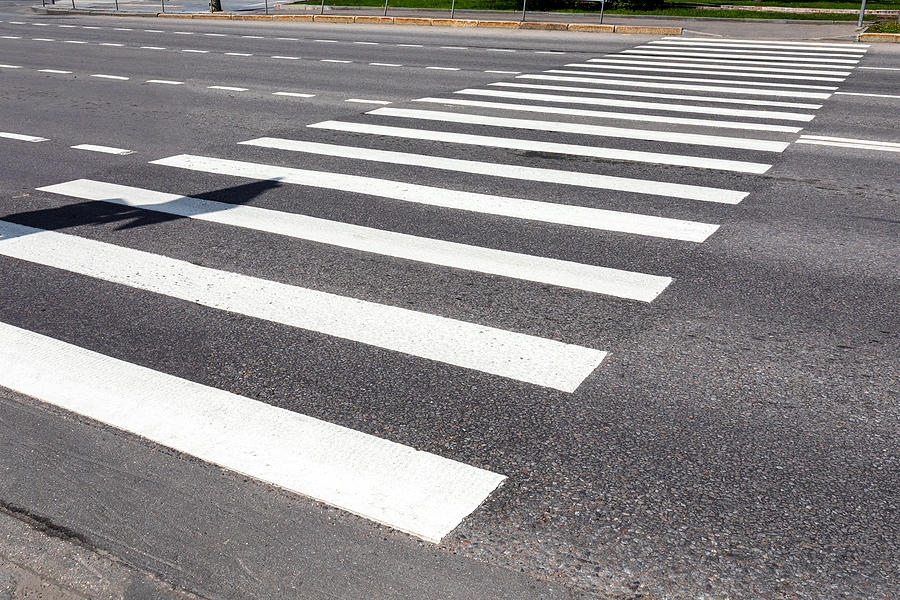Pedestrian accidents are among the most devastating personal injury events because victims typically suffer life-altering injuries. While most would assume the driver is to blame in every instance, there are times when the pedestrian does something to cause the accident. This kind of case can be very complex, requiring the knowledge of an experienced, skilled attorney. Here are the most common causes of pedestrian accidents in Florida.
At The Eberst Law Firm, we have a team of lawyers with the experience to help clients involved in pedestrian accident cases. We’ll determine who is to blame and help victims obtain the compensation they deserve. You can call 1-888-CALL-JON or contact us online to schedule a free consultation.

Causes of Pedestrian Accidents: Drivers
According to a study conducted by the City of Minneapolis, researchers used ten years of data to determine whether drivers or pedestrians were more to blame in pedestrian accidents. They found that drivers were at fault 62% of the time. But researchers conducting a study of 7,000 Florida pedestrian accidents found that pedestrians were actually to blame in 80% of incidents.
Regardless of the numbers, drivers and pedestrians make mistakes that can lead to disaster. The following are some of the more common driver errors.
Distracted Driving
Engaging in phone conversations, texting, or using mobile apps while driving diverts the driver’s attention away from the road, making it harder to detect pedestrians and react in time to avoid an accident. Consuming food or beverages while driving can also lead to distractions that reduce drivers’ awareness of their surroundings and increase the risk of pedestrian accidents.
Interacting with entertainment systems, changing radio stations, or programming GPS devices diverts attention from the road as well, increasing the chances of hitting a pedestrian.
Driving Under the Influence (DUI)
Alcohol and drug use impair a driver’s ability to make sound decisions, react quickly to unexpected situations, and maintain proper vehicle control. This dramatically increases the likelihood of hitting someone.
Road Rage
Drivers who engage in road rage behaviors, such as tailgating, excessive honking, or deliberately disregarding pedestrian rights, pose a significant danger. Aggression impairs judgment and increases the risk of collisions. Disregarding traffic signals poses a significant risk to pedestrians as well. Drivers who run red lights or stop signs can collide with pedestrians who have the right-of-way.
When someone experiences road rage, they’re also more prone to speeding. Driving too fast limits their ability to stop or swerve to avoid pedestrians. Higher speeds also increase the severity of injuries sustained in a pedestrian accident.
Lack of Awareness
Many motorists are unaware of their surroundings. When they fail to check blind spots or use mirrors, they may overlook pedestrians crossing the road or walking alongside the vehicle.
Drivers who fail to give pedestrians the right-of-way at marked crosswalks or intersections put pedestrians at risk. This could be due to negligence, impatience, or a lack of awareness of pedestrian rights. If a motorist neglects to use turn signals, that can confuse pedestrians crossing or walking alongside the road.
Inexperience
Inexperienced drivers may not have developed the skills to identify potential pedestrian risks and react appropriately. This lack of experience can lead to accidents.
Causes of Pedestrian Accidents: Pedestrians
As you learned earlier, pedestrians can cause accidents as well. They must follow the rules of the road just as motorists. Disregarding traffic laws, such as jaywalking (crossing the street outside designated areas), crossing against traffic signals, or failing to use designated crosswalks, increases the likelihood of collisions with vehicles.
Some of the other reasons pedestrians cause accidents include the following:
Walking While Intoxicated
Intoxication impairs judgment, coordination, and balance, making pedestrians more vulnerable to accidents. There have been far too many tragic stories of impaired pedestrians wandering onto a busy road and dying.
Walking While Distracted
Pedestrians engrossed in their mobile phones, listening to loud music through headphones, or engaged in other distractions may not be fully aware of their surroundings, increasing the risk of accidents. If someone is walking, they have the same responsibility to focus on the road as someone behind the wheel.
Not Following Road Rules
Pedestrians who fail to look both ways before crossing the road or unexpectedly dart into traffic without yielding to oncoming vehicles increase the risk of accidents. Disregarding traffic laws and signals puts both pedestrians and drivers at risk.
Shared Fault
It’s important to note that while some pedestrian accidents can be attributed solely to the actions of either the driver or the pedestrian, there are cases where both parties share fault. Shared fault scenarios can occur when the driver and the pedestrian contributed to the accident. For example, suppose a pedestrian jaywalks across a busy street while a driver exceeds the speed limit. Both parties may share fault for disregarding traffic rules.
Florida changed from a pure to a modified comparative negligence state in March 2023. If the plaintiff is more than 50% at fault for an accident, they’re not entitled to compensation. Under the previous system, plaintiffs could obtain compensation as long as they weren’t 100% responsible for an accident. If, for example, a plaintiff was 75% at fault, they’d still be eligible for 25% of the compensation they would have received if they weren’t assigned any blame.
Evidence Used to Show Fault
In a pedestrian accident, determining fault requires carefully examining the available evidence. Various types of evidence can be used to establish fault and determine liability. Here are some common forms of evidence used in pedestrian accident cases:
- Eyewitness testimony: Statements from individuals who witnessed the accident can provide valuable firsthand accounts of what occurred. Eyewitnesses may include pedestrians, drivers, passengers, or others at the scene. Their testimonies can help establish the actions and behaviors of the pedestrian and the driver leading up to the accident.
- Surveillance footage: Video recordings from traffic cameras, surveillance cameras on nearby buildings, or dashcams can provide visual evidence of the accident. These recordings can help establish the sequence of events, the parties’ positions, and any contributing factors.
- Accident reconstruction: Accident reconstruction experts analyze physical evidence, witness accounts, and other available data to recreate the accident scene. They use techniques such as measuring skid marks, assessing vehicle damage, and examining the scene to determine the vehicles’ speed, direction, and movements. This helps in assessing fault and understanding how the accident occurred.
Contact The Eberst Law Firm to Speak with an Experienced Pedestrian Accident Attorney
In the event of a pedestrian accident, it’s crucial to seek legal assistance from experienced pedestrian accident attorneys like those with The Eberst Law Firm. We can provide valuable guidance and representation, helping you understand your rights, help you navigate the complexities of your case, and pursue appropriate compensation for your injuries and damages. Schedule a free case review by using our online form or calling 1-888-CALL-JON.
